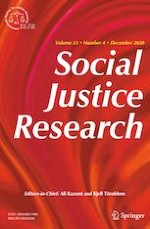14.10.2020
Lay Victims’ Conceptions of Environmental Crime and Environmental Injustice: The Case of the Chem-Dyne Superfund Site
Erschienen in: Social Justice Research | Ausgabe 4/2020
EinloggenAktivieren Sie unsere intelligente Suche, um passende Fachinhalte oder Patente zu finden.
Wählen Sie Textabschnitte aus um mit Künstlicher Intelligenz passenden Patente zu finden. powered by
Markieren Sie Textabschnitte, um KI-gestützt weitere passende Inhalte zu finden. powered by
